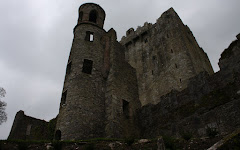1. from the German mathematician Maria Reiche--originally the translator for the American archaeologist Paul Kosok, the one who first brought aerial photos of the lines to the world's newspapers in 1939--by the time she died in 1998 after studying the lines for six decades of her life - the lines were "the biggest astronomy book in the world."
2. from Hans Horkheimer (1947) - the lines were tribal symbols.
3. from George Von Breunig (1980) - the lines were a giant running track.
4. from Henri Stirlin later in the 1980s - the lines represented huge weavings and strands of yarn.
5. from Erich von Daniken in his book Chariots of the Gods - the entire area was a giant landing strip for extraterrestrials and one of the shapes was an astronaut. (See Space Man figure below.)
6. A popular current theory is that the lines were mainly about water in this arid land; the lines were created for religious/magical practices to ensure a steady supply of water.
Most of us in the Intrepid Tour chose to view the Nasca Lines the optimal way: by air. As one of five passengers in a small plane piloted by Juan Carlos, I had a wonderful time photographing the lines for the majority of the flight, although my stomach lost its steel after about the eighth set of steeply banked curves--modus operandi to allow people on both sides of the plane to see the lines. My queasiness quotient jumped exponentially, though, when the lady in the passenger seat beside Juan Carlos commenced urping into a barf bag. Seated directly behind Juan Carlos, I was the only one besides him who was aware of her actions for she was admirably discrete . . . . It's just that I had a direct view of both her and the barf bag. However, we landed without anyone else heaving, and a few minutes perambulating on stable ground and gulping in fresh air quickly quieted the nausea factor.
 Up we go! The only green in this landscape is the irrigated swath on both sides of the Nazca River.
Up we go! The only green in this landscape is the irrigated swath on both sides of the Nazca River. Some of the earliest lines.
Some of the earliest lines.(Click on any of the photos to see a larger perspective; details show up better, too.)
I photographed more forms and shapes on our flight than are included here; these are just some of my favorites.




































1 comment:
You have a habit of traveling with people with rather weak stomachs. At least I'm not alone.
Post a Comment